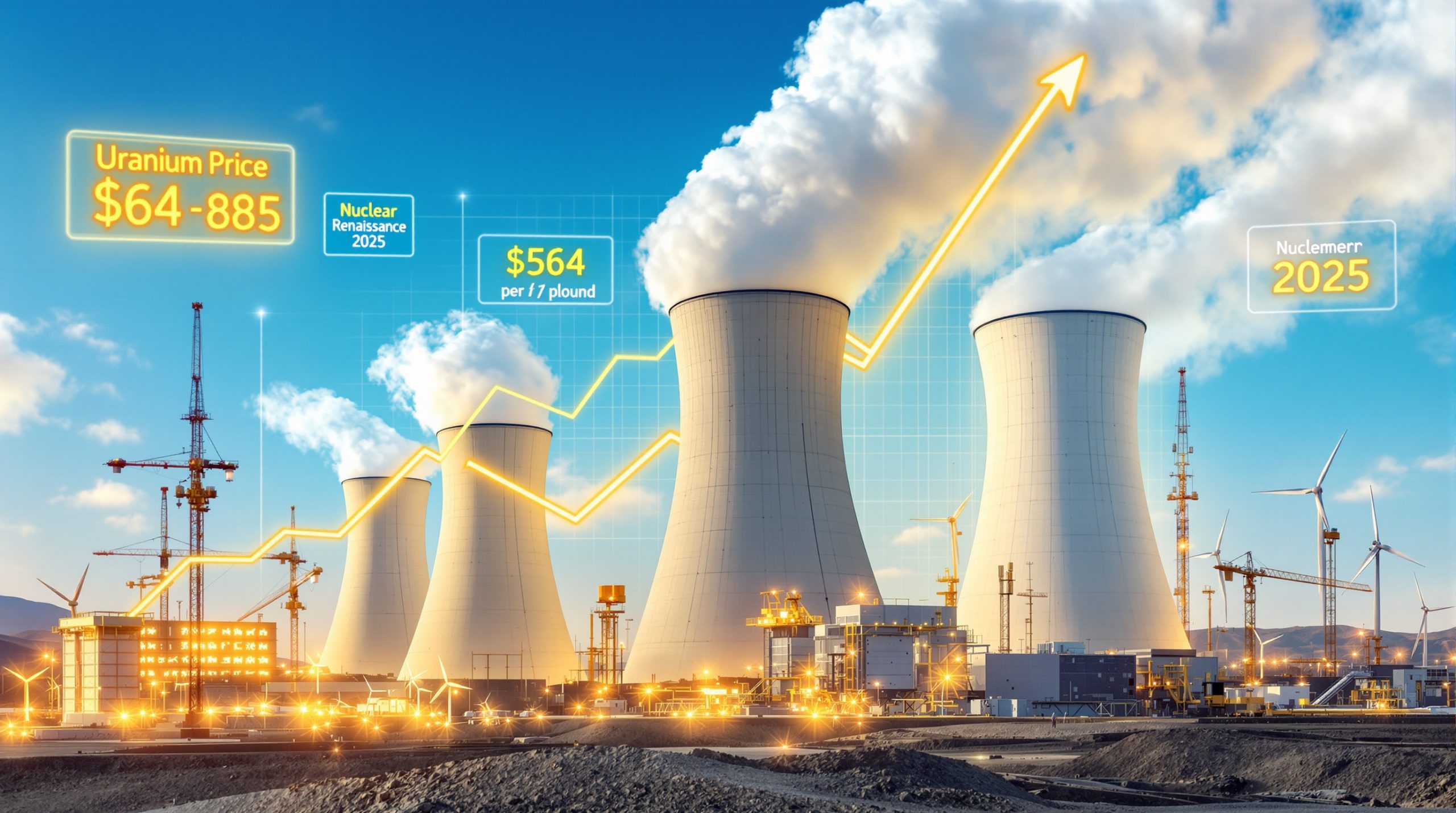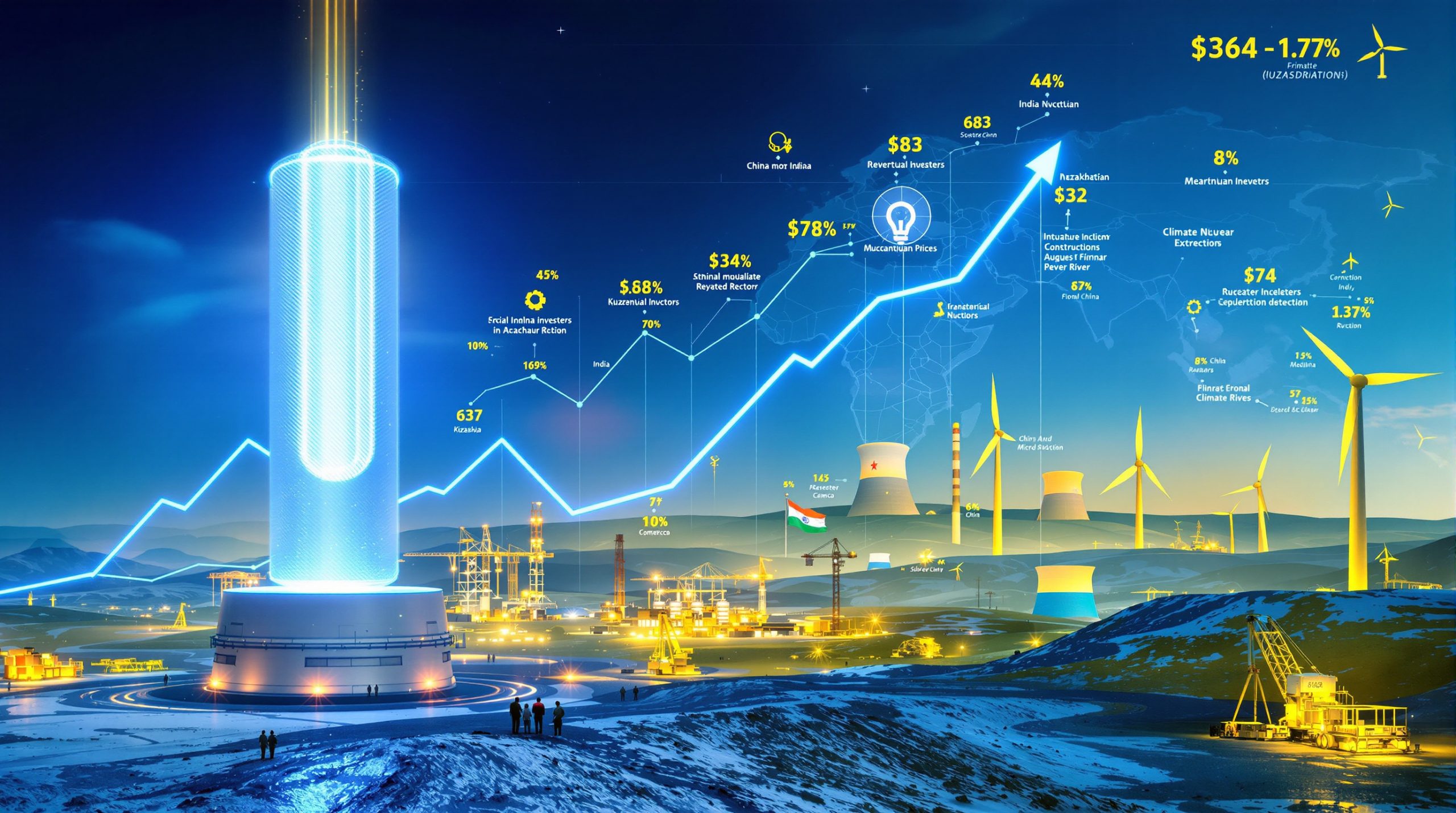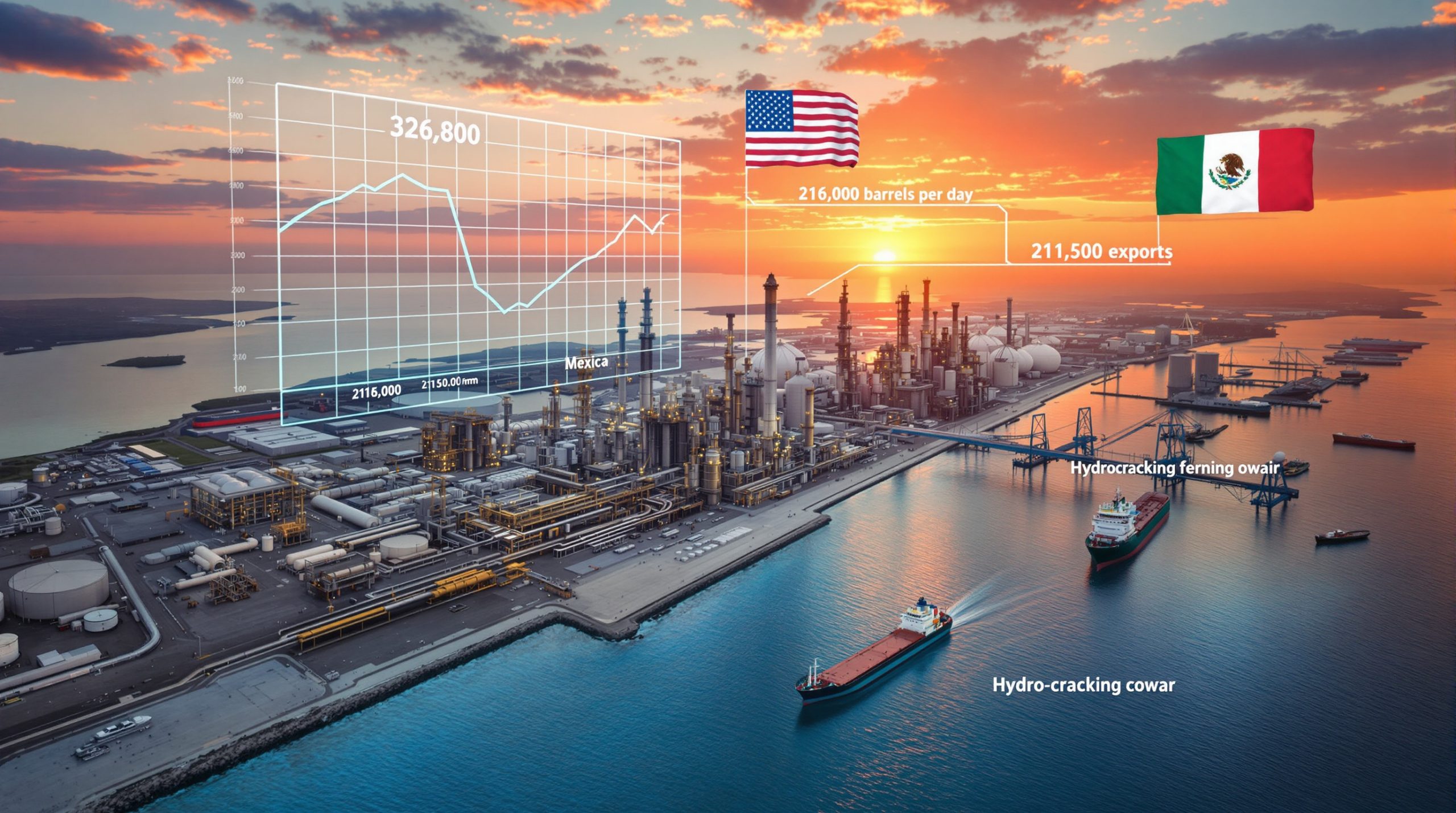How Has Woodside Energy's Strategic Pivot Impacted Its Financial Outlook?
Woodside Energy Group has made significant operational improvements that have strengthened its financial position, as revealed in its latest June quarter update. The company has strategically realigned its focus on core assets while implementing robust cost control measures, resulting in improved production forecasts and reduced operational expenses.
Woodside's Production Boost and Cost Reduction Strategy
Woodside has implemented a comprehensive operational excellence program that has delivered measurable results across its global portfolio. The company recently raised its annual production guidance to 188-195 million barrels of oil equivalent (MMboe), a focused improvement from the previous 186-196 MMboe range, demonstrating increased confidence in operational delivery.
This production boost coincides with a significant reduction in unit production cost forecasts to US$8.00-US$8.50 per barrel, down from the previous guidance of US$8.50-US$9.20. According to industry analysts, this 6-8% cost reduction places Woodside among the top-performing energy companies for operational efficiency in the Asia-Pacific region.
The market has responded positively to these developments, with Woodside's share price increasing by 1.5% to A$25.22 following the announcement. This upward movement reflects investor confidence in the company's strategic direction and operational execution.
Two key drivers behind these improvements have been:
- Enhanced Senegalese asset performance: The Sangomar offshore oil field has exceeded production expectations since coming online, contributing significantly to the company's overall output growth
- Improved reliability at domestic LNG facilities: Technical upgrades and maintenance optimization at the North West Shelf and Pluto LNG facilities have resulted in uptime improvements of approximately 3% year-over-year
"Woodside's ability to simultaneously increase production guidance while reducing unit costs demonstrates exceptional operational discipline in a challenging market environment," noted energy analyst Sarah Chen from Macquarie Research in a recent client note.
The Strategic Shift in Woodside's Global Energy Portfolio
Accelerating Traditional Energy Investments
Woodside is actively positioning itself as one of the world's leading LNG producers through strategic developments focused on traditional energy assets. The cornerstone of this strategy is the US$12.5 billion (A$19.05 billion) Scarborough development in Western Australia, which represents one of the largest natural gas investments in the region.
The Scarborough project is expected to produce approximately 8 million tonnes per annum (Mtpa) of LNG when fully operational, with first gas targeted for 2026. This timeline remains on track despite industry-wide supply chain pressures that have delayed similar projects globally.
In addition, Woodside is advancing its:
- Louisiana LNG facility in the United States, which will provide the company with strategic access to Atlantic Basin markets
- North West Shelf extension projects that will extend the life of Australia's oldest LNG facility
- Browse Basin evaluation for potential future development opportunities
This portfolio of traditional energy assets is strategically aligned with projected global LNG demand, which is expected to grow by 25-30% by 2040 according to the International Energy Agency's latest projections.
Reassessing Low-Carbon Investments
In a significant strategic pivot, Woodside has announced its complete exit from the proposed H2OK liquid hydrogen project in Oklahoma. This decision will result in a pre-tax impairment of approximately US$140 million (US$110 million post-tax) to be recognized in the company's half-year results.
The H2OK project was initially positioned as a cornerstone of Woodside's clean energy strategy, with plans to produce up to 90 tonnes per day of liquid hydrogen for the transportation sector. The exit represents a fundamental reassessment of the company's approach to hydrogen investments amid sector-wide challenges.
Industry expert Michael Robertson, Director at Energy Transition Partners, explains: "Woodside's decision reflects the reality that green hydrogen economics remain challenging in the current market environment. Without significant policy support or technological breakthroughs, many early-stage hydrogen projects face similar hurdles."
Why Is Woodside Reconsidering Its Hydrogen Strategy?
The decision to exit the Oklahoma hydrogen project comes amid broader reconsideration of low-carbon investment strategies across the energy sector. While hydrogen continues to be viewed as a potentially significant contributor to the energy transition challenges, multiple market factors have forced companies like Woodside to reassess the timing and scale of their investments.
Market Challenges in the Hydrogen Sector
The hydrogen sector faces several persistent challenges that have impacted project economics and development timelines:
- Production cost hurdles: Current green hydrogen production costs remain high at approximately US$4-6 per kilogram in most markets, significantly above the US$2/kg threshold widely considered necessary for commercial viability
- Infrastructure limitations: The lack of dedicated hydrogen transportation and storage infrastructure requires substantial upfront investment
- Regulatory uncertainty: Evolving policy frameworks across different jurisdictions create planning challenges for global companies
- Market competition: Alternative low-carbon technologies such as direct electrification have gained traction in sectors previously targeted for hydrogen adoption
These challenges are particularly acute in markets like the United States, where despite the introduction of production tax credits under the Inflation Reduction Act, hydrogen projects still face economic hurdles compared to traditional energy investments.
According to BloombergNEF's Hydrogen Economy Outlook, the global hydrogen project pipeline has seen a 35% reduction in expected final investment decisions during 2024-2025 compared to projections made just two years ago.
"While hydrogen remains a potentially transformative energy carrier for decarbonization, the investment case for large-scale projects requires further technology cost reductions and policy certainty. Companies are increasingly adopting a staged approach to hydrogen investments," notes Dr. Elena Kazimirova, Chief Hydrogen Analyst at Global Energy Research.
Financial Implications of the Strategic Shift
The decision to exit the Oklahoma hydrogen project will have several measurable financial impacts on Woodside:
- Immediate impairment charge: The US$140 million pre-tax impairment (US$110 million post-tax) represents approximately 0.3% of Woodside's total asset base
- Capital reallocation: Resources previously earmarked for hydrogen development can be redirected to higher-return traditional energy projects or shareholder returns
- Reduced capital expenditure risk: By limiting exposure to early-stage hydrogen projects, Woodside reduces potential future write-downs if sector economics don't improve
- Improved near-term financial metrics: Focus on core LNG business is expected to enhance cash flow predictability and return on capital employed (ROCE)
The company's revised capital allocation strategy prioritizes projects with more certain returns, primarily in the LNG sector where Woodside has established competitive advantages in development and operations.
A financial analysis by investment bank Morgan Stanley suggests the hydrogen project exit could improve Woodside's projected return on capital employed (ROCE) by approximately 0.5-0.7 percentage points over the next five years, assuming capital is redeployed to core LNG projects.
How Does Woodside's Strategy Compare to Industry Peers?
Woodside's strategic decisions reflect a distinctive approach to the energy transition compared to both regional and global competitors. This positioning has implications for the company's competitive advantages, risk profile, and long-term investment case.
Positioning Within the Global Energy Transition
When compared to industry peers, Woodside's strategy shows several key differentiators:
| Company | LNG Strategy | Hydrogen/Low-Carbon Approach | Production Cost Focus |
|---|---|---|---|
| Woodside | Aggressive expansion (Scarborough, Louisiana) | Selective, economics-driven | Strong (US$8.00-8.50/boe) |
| Santos (Australia) | Moderate growth (Barossa) | Maintained hydrogen ambitions | Moderate (US$8.50-9.50/boe) |
| Shell | Selective LNG growth | Broad hydrogen portfolio maintained | Varied by region |
| BP | Reduced LNG focus | Extensive hydrogen investments | Strategic restructuring |
| Chevron | Targeted LNG growth | Limited hydrogen exposure | Efficiency-focused |
Woodside has adopted a more aggressive LNG expansion strategy than many regional competitors, particularly through the Scarborough project, which represents one of the largest current LNG developments globally.
The company's approach to hydrogen is notably more selective than European majors like BP and Shell, which continue to maintain broader low-carbon portfolios despite similar economic challenges. While European majors have collectively committed over US$15 billion to hydrogen projects through 2030, Woodside's exit from H2OK signals a more cautious approach.
Energy analyst James Peterson from Bernstein Research notes: "Woodside is focusing on its core competencies in natural gas while taking a wait-and-see approach on hydrogen. This contrasts with European majors who face greater stakeholder pressure to diversify beyond hydrocarbons, even when project economics are challenging."
Investment Community Response
Market analysts have generally responded positively to Woodside's strategic adjustments, with several key observations:
- The 1.5% share price increase following the announcement indicates investor approval of the strategic pivot
- Multiple analyst reports have highlighted the improved capital discipline as aligning with shareholder expectations for energy companies in the current market environment
- Production guidance increases suggest operational execution is exceeding expectations, a key differentiator in the sector
- The hydrogen project exit demonstrates management's willingness to make difficult portfolio decisions rather than pursuing potentially uneconomic projects
JP Morgan energy analyst Natasha Richards commented in a recent research note: "Woodside's decision to exit the Oklahoma hydrogen project, while maintaining its core LNG growth strategy, strikes a pragmatic balance between near-term returns and long-term positioning. The market is rewarding this capital discipline."
The investor response reflects a broader trend of energy companies being rewarded for capital discipline and focus on core competencies, rather than pursuing diversification at the expense of returns.
What Are the Long-Term Implications for Woodside's Business Model?
Woodside's current strategic positioning has significant implications for its long-term business model, competitive positioning, and financial performance. These decisions will shape the company's trajectory through the energy transition and its ability to generate sustainable returns for shareholders.
Future Growth Trajectory
Woodside's strategic decisions point to a future growth trajectory with several key characteristics:
- LNG as the cornerstone: Natural gas will remain the primary focus of Woodside's portfolio, with the company positioned to benefit from projected LNG demand growth in Asia through 2040
- Selective approach to low-carbon investments: Future investments in emerging technologies will likely be subject to rigorous economic criteria and staged development approaches
- Portfolio optimization: Continued evaluation of asset performance could lead to additional divestments of non-core or underperforming assets
- Balanced approach between shareholder returns and growth: Capital allocation likely to maintain higher dividend payout ratios than European peers while funding strategic LNG expansions
This approach positions Woodside as primarily a natural gas specialist with selective low-carbon optionality, rather than pursuing a rapid transition to a diversified energy company model.
Energy economist Dr. Amanda Rodriguez explains: "Woodside's strategy acknowledges the reality that natural gas will play a critical role in the energy mix for decades to come, particularly in Asia-Pacific markets where alternatives face infrastructure and cost challenges. By focusing on becoming a premier LNG supplier, they're playing to their established strengths."
The company's future will be heavily influenced by the successful execution of the Scarborough project, which represents approximately 20% of Woodside's future production base. Current project reports indicate the development remains on schedule and budget, with approximately 65% of overall completion achieved.
Key Performance Indicators to Monitor
Investors should track several metrics to evaluate Woodside's strategy execution:
- Production volumes relative to updated guidance: Achievement of the 188-195 MMboe target would validate operational improvements
- Unit cost performance against reduced targets: Maintaining costs below US$8.50/boe would demonstrate sustainable efficiency gains
- Progress on major project developments: Scarborough milestones, particularly the offshore platform installation scheduled for Q3 2025
- Future decisions regarding alternative low-carbon investments: Whether the company pursues more economically viable clean energy options beyond hydrogen
- Cash flow generation and capital return policies: Free cash flow yield projections of 8-10% at current oil price dynamics support dividend sustainability
"The key indicator for Woodside will be delivering Scarborough on time and on budget. If successful, this will validate their strategic focus on LNG and could justify a valuation premium relative to peers with less defined growth strategies," suggests portfolio manager David Thompson of Pacific Asset Management.
Additionally, investors should monitor Woodside's evolving ESG strategy, as the company will need to balance its focus on natural gas with increasing stakeholder expectations regarding emissions reduction. The company has maintained its target of 30% reduction in Scope 1 and 2 emissions by 2030, though its pathway to achieving this goal may need refinement following the hydrogen strategy adjustment.
FAQ: Woodside Energy's Strategic Repositioning
What prompted Woodside to exit the Oklahoma hydrogen project?
Woodside cited persistent challenges within the lower-carbon hydrogen sector as the primary reason for exiting the H2OK liquid hydrogen project. These challenges include economic viability concerns, regulatory uncertainty, and infrastructure limitations that collectively undermined the project's investment case.
How significant is the production guidance increase?
The adjustment to 188-195 MMboe represents a tightening and modest increase of the previous 186-196 MMboe range. While the midpoint change is modest (~0.3%), the narrower range indicates improved confidence in operational performance, particularly from Senegalese assets and domestic LNG operations.
What does the cost reduction indicate about Woodside's operational efficiency?
The reduction in unit production cost guidance from US$8.50-US$9.20 to US$8.00-US$8.50 per barrel demonstrates significant operational improvements. This 6-8% reduction positions Woodside among the most cost-effective operators in its peer group and enhances projected free cash flow by approximately US$100-120 million annually.
Is Woodside abandoning its clean energy ambitions entirely?
No, the company appears to be taking a more selective approach to clean energy investments rather than abandoning them completely. Woodside continues to maintain its carbon capture and storage initiatives in Australia and has indicated it remains open to hydrogen projects with stronger economics or government support. The strategic shift represents prioritization rather than complete abandonment of low-carbon opportunities.
How does this strategic shift affect Woodside's competitive position?
The focus on LNG expansion and operational efficiency positions Woodside as a leading global LNG producer with an improved cost structure. This enhances its competitive advantage in traditional energy markets while reducing exposure to uncertain early-stage clean energy technologies. The company's competitiveness will increasingly depend on its ability to deliver LNG projects on time and budget while maintaining industry-leading operating costs. In the long term, Woodside may need to balance its traditional energy focus with decarbonisation benefits and renewable energy trends to remain competitive amid evolving US economic factors.
Further Exploration:
Readers interested in learning more about developments in the energy sector can explore related educational content from Proactive Investors at https://www.proactiveinvestors.com.au, which offers additional perspectives on energy company strategies and market trends.
For deeper analysis of LNG market dynamics and hydrogen development challenges, the International Energy Agency provides comprehensive research and outlook reports at https://www.iea.org/topics/natural-gas.
Looking to Profit from the Next Major Mineral Discovery?
Stay ahead of the market with Discovery Alert's proprietary Discovery IQ model, which delivers instant notifications when significant mineral discoveries are announced on the ASX. Explore how major discoveries have historically generated substantial returns by visiting the dedicated discoveries page and start your 30-day free trial today.




